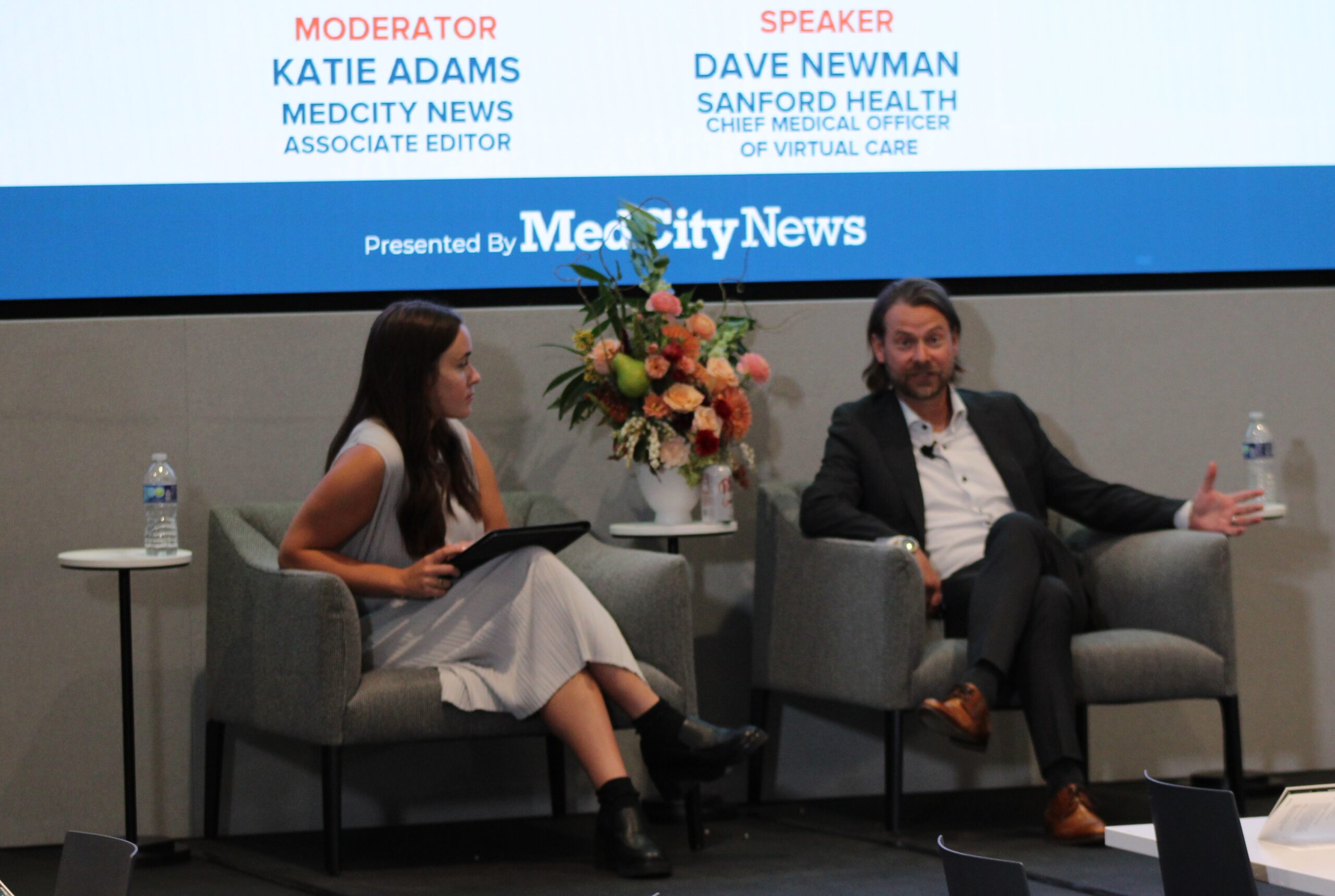
In rural America, virtual care often means the difference between care and no care.
Few people know this to be true more than Dave Newman, chief medical officer of virtual care at Sanford Health. For more than 13 years, he has been working at the Sioux Falls, South Dakota-based health system, which operates 56 hospitals and 288 clinics in several states across the Upper Midwest.
At Sanford, virtual care is defined as “anything that’s not face-to-face,” Newman noted during a fireside chat on Thursday at MedCity News’ INVEST Digital Health conference in Dallas.
Many people think virtual care just means video telemedicine visits, but Sanford has expanded far beyond that, he said. For instance, the health system provides remote patient monitoring to help manage patients’ chronic conditions, and it offers e-visits, in which the patient fills out a questionnaire and the provider responds with a treatment plan.
Remote specialist consultations are also an important part of virtual care delivery in rural communities, as access to sub-specialists is a huge challenge in these areas, Newman added — noting that he is one of the four endocrinologists practicing in North Dakota.
“It takes roughly a year to get in to see me, which is completely unacceptable. If there’s a blizzard and you can’t drive the six hours that you were going to drive to see me, you get rescheduled for a year, right? That’s absolutely unacceptable. So we figured we were going to treat them regardless of their ZIP code,” Newman remarked.
Offering multiple virtual options makes it easier for patients to get care regardless of their location or circumstances, he said.
He highlighted one of his patients who lives in the small town of Dickinson, North Dakota.
“He’s a rancher who lives on a ranch by himself. He has a rotary phone,” Newman stated. “ I do virtual care that way — I deliver care through his rotary phone. It’s pretty amazing.”
Even though verbal visits are reimbursed at a much lower rate than video visits, they can still be a decent way to provide care, he pointed out.
This option is sometimes the only way to reach a patient, especially for incarcerated people or those who lack internet access or video-capable devices.
“There are certain instances where it’s just the easiest thing to do and it’s the right thing to do, and so we do it that way,” Newman declared.
He added that broadband access has ended up being less of an issue than some may think, as
“roughly 99%” of Sanford patients have it. To him, the real challenges are digital literacy and provider resistance.
Newman thinks that change management is key to getting over these hurdles. Many providers resisted until virtual care became a necessity, he noted — saying that this was the case with his friend and colleague Dr. Adam Jackson, a Sanford neurosurgeon.
“He flat out told me, ‘Dave, I’m never, ever going to do virtual care. This is stupid. I can do the same thing in my office.’ And then we had a blizzard, and on this post-op clinic day, which he does twice a month, he wasn’t going to get to see any of his patients. And so at 6:15 in the morning, my phone goes off, and he kind of sheepishly puts his tail between his legs and says, ‘Dave, I think I need to do this virtual care,’” Newman explained.
In his view, scaling virtual care is not only the right thing for rural providers to do, but it is also the financially prudent thing to do.
Sanford has conducted studies showing that its virtual care programs save patients an average of 176 miles of travel and about $300 per visit, Newman said.
He also noted that Sanford is an integrated health system that takes on risk for its Medicare Advantage patients, and it uses free primary care virtual visits to close care gaps and manage risk among these beneficiaries. They are even incentivized with grocery gift cards to encourage participation and ensure they stay engaged in preventive and follow-up care.
Newman emphasized that in rural areas, this type of innovation is driven by necessity, since the alternative is often no care at all.
Photo: Nick Fanion, Breaking Media





